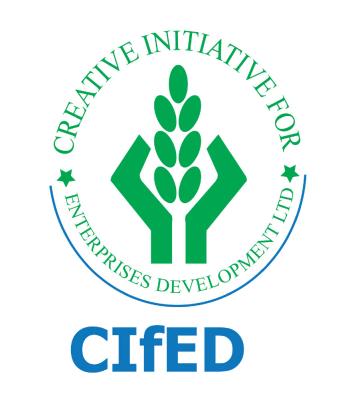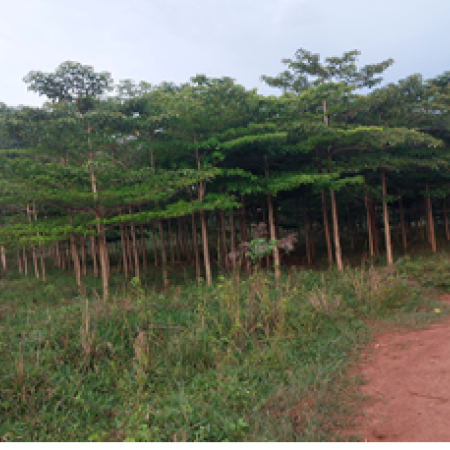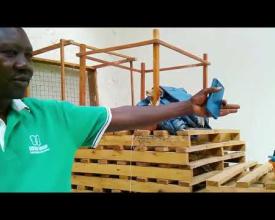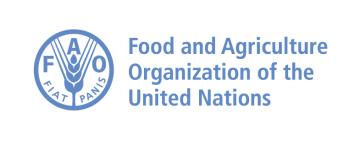
Restoration of Degraded Landscapes through the Promotion of Agroforestry-Food Grain System
Creative Initiative for Enterprise Development (CIfED), established in 2013, is a social enterprise addressing rising poverty in Uganda's Teso sub-region. With many households turning to charcoal burning for income, leading to significant landscape degradation, CIfED launched the ReDLAF Initiative to counter these challenges. The initiative focuses on enhancing farmers' capacities in collective marketing and product quality improvement, aiming to secure higher prices and offer alternative income sources. By promoting sustainable agricultural practices, ReDLAF encourages tree cultivation, reducing dependence on charcoal and preserving the environment. In partnership with the Food and Agriculture Organization (FAO), CIfED is developing value chains for key crops like simsim, groundnuts, green grams, soya, and cassava in Kaberamaido District. FAO supports this effort through value chain development and financing for clean grain production in Alwa and Kaberamaido sub-counties.
Contexte
Défis à relever
The main issues that our solution has addressed:
Environmental: We have had a high increase of landscape degradation to farming, fuel wood and charcoal, poles for construction and drying sesame in the last 10 years which resulted in the harsh weather conditions. In 2016 we had only one rainy season that caused an increase in food insecurity and suffering to the community
Social: Uganda mainly depends on rain fed agriculture, due to uncertainty in weather conditions with either long dry spells or floods our farming communities suffer from food insecurity and unemployment. With 80% of Ugandans employment through the agriculture sector.
Economic: Lack of disposable income that drove the community to cut trees for charcoal as an alternative source of income which is not sustainable.
Emplacement
Traiter
Résumé du processus
The integration of agribusiness, land restoration, and enterprise development forms a comprehensive strategy that effectively addresses the restoration of degraded landscapes through the promotion of Agroforestry-Food Grain.
Agribusiness incentivizes farmers to engage in tree planting by offering immediate and diversified sources of income through mixed farming. This approach not only meets farmers' short-term financial needs but also fosters long-term ecological benefits. Restoration efforts are targeted at both forest reserves and individual private lands, ensuring that large-scale environmental rehabilitation is achieved alongside localized, community-driven initiatives.
By enhancing value chains for key agricultural products, enterprise development supports the economic viability of tree cultivation, encouraging farmers to maintain and expand their agroforestry practices. This model not only improves the health of degraded landscapes but also bolsters farmers' livelihoods, creating a sustainable cycle of environmental stewardship and economic growth.
Blocs de construction
Agribusiness as an approach to incentivize farmers to grow trees
Agribusiness is an approach we use to incentivize the farmers to incorporate trees in their farms and parts of the forest land to grow trees.
Facteurs favorables
- Access to arable land in farmers own private land and within the central forest reserve through a collaborative forestry management approach in partnership with the National Forestry Authority
- Willingness of the farmers to be involved in the process of tree growing and management in the restoration agenda
- Market access for farmers' produce via a marketing hub located at the satellite storage facility in Alwa and Aperikira Sub-Counties, Kaberamaido District.
Leçon apprise
- Prior identification of market-demand crops before mobilizing farmers to grow them enhances the likelihood of strong demand for the produce.
- Growing trees alongside crops improves their growth rate compared to monoculture, resulting in higher yields and a greater variety of products from the same land.
- Incentivizing farmers to maintain and manage their trees ensures that they do not rely solely on tree income, as they now have alternative sources of revenue.
- Our restoration efforts have led to a greener environment and improved air quality.
Restoration of degraded land in both forest reserve and on individual private land
The communities living adjacent to the degraded Atigo and Angutawele Central Forest reserves were mobilized to participate in the restoration of parts of the forest under Collaborative Forestry Management approach in partnership with the National Forestry Authority and the community.
Facteurs favorables
- Degraded forests and privately owned lands that urgently require restoration to mitigate severe climate change impacts.
- Farmers' enthusiasm to participate in tree planting and management as part of the restoration efforts.
- Supportive government policies that encourage community involvement in restoration activities, backed by technical leaders from Alwa and Kaberamaido Sub-Counties in Kaberamaido District.
- Technical assistance from the Food and Agriculture Organization through the Saw Log Production Grant III, which facilitated the creation of a 5-hectare community demonstration woodlot.
Leçon apprise
- The community needed extensive sensitization and education to understand the importance of restoration.
- We established a tree nursery to supply seedlings to farmers locally, reducing the costs associated with sourcing seedlings from distant locations.
- Initially, we planted exotic species like pine and eucalyptus, but have now shifted our focus to promoting indigenous trees and avoiding monoculture.
- When we integrated crops that provided short-term income and demonstrated cash flow for farmers, our pitch decks attracted significantly more attention, as evidenced by projects like the NSSF Hi Innovator Project and Land Accelerator.
Enterprise development through value chain enhancement to sustain tree cultivation and improve livelihoods
The tree farmers are encouraged to participate in different value chains/enterprises developed for alternative income sources rather than depending on tree and land sale cutting for income.
Facteurs favorables
- Access to arable land on farmers' private properties and within the central forest reserve enables farmers to cultivate various crops, raise poultry, and rear small ruminants, all of which are in high demand and have readily available markets.
- Technical support from FAO on value chains development and the accelerator programs to support with making the farmers business ready and youth upskilling. In partnership with Rural Communities in Development(RUCID) designed skilling program for girls and women in the following enterprises; Bakery, Juice, wine, roots and cereal processing, Banana, coffee and organic input production and briquattes making for fuel energy all aimed at income generation for the women and girls.
Leçon apprise
- Agribusiness practices that integrate mixed farming with tree growing offer a sustainable approach to restoration. This method enhances plant, crop, and soil health by leveraging the natural benefits that different species provide to each other. In turn, crops can support tree health by preventing soil erosion and enhancing soil structure. This complementary relationship promotes a more resilient and productive agricultural system, fostering long-term ecological balance and sustainability.
- Farmers practicing mixed agriculture within an agribusiness framework benefit from diversified sources of income and food. This approach mitigates the risks associated with climate change, such as prolonged droughts or floods, by not relying on a single crop or enterprise. Diversified farming systems ensure that if one crop fails due to adverse weather conditions, other crops or agricultural activities can provide income and sustenance. This reduces vulnerability and enhances food security, allowing farmers to sustain their livelihoods despite environmental challenges.
- For long-term sustainability, farmers must align their expenditures with various income sources. It is crucial to have a daily income source to cover ongoing expenses and manage financial risks effectively. Diversified income streams from mixed farming, including crops, livestock, and tree products, provide a steady cash flow that can support daily needs and unexpected expenses. This financial resilience enables farmers to invest in their land and resources continuously, promoting sustainable agricultural practices and improving overall economic stability.
Impacts
Environmental
- 30 hectares restored in the allocated 47 hectares in Atigo CFR and 5 hectares restored in Angutawele CFR in the allocated 24 hectares. We plan to fully establish the whole 24 hectares into an arboretum where school children and the community can come to learn and see the endangered indigenous tree species that are becoming extinct in our community.
- Supported 15 schools to establish environmental clubs and planted 5 species each with 15 copies of Wabugia Ugandesis, Prunas African, Afizelia, Mahogany and Muvule. Each school received 75 seedlings. With support from Lukango Tree Conservancy we have an MOU for three years with the schools to manage the trees that will be tagged with the club member names. Each learner plants and is manages the tree.
- Created two murals in two primary schools to communicate and sensitize the learners on the effects of climate change, with the aim of supporting behavioural change on issues relating to climate mitigation efforts.
- We are in discussion with National Forestry Association to restore a another 100 hectares in Bululu Hills to replicate what was done in Kazimzumbwi in Tanzania through purely restoration methods, this will be in partnership with the National Forestry Authority of Uganda, Lukango Tree Conservancy.
Social
- We are working with 17 tree grower groups with 530 members under the Collaborative Forestry Management (CFM) and 2,700 farmers under Farmer Field
Bénéficiaires
- 17 Collaborative Forestry Management (CFM) groups with 530 members
- 2,700 Farmer Field Schools
- Serere Research Station
- National Forestry Authority
- Lukango Tree conservancy
Objectifs de développement durable
Histoire

Mrs. Janet Anyumenl Etumu is a dedicated member of the Abangasi Farmers group, one of 17 CFM groups working to restore parts of the Atigo Central Forest Reserve. Janet’s home, which borders the Atigo forest, has a rich history. When she moved to the village in 1976, the forest was dense with indigenous trees, full with wild birds and animals. These natural resources provided the community with fuel wood, herbal medicines, wild fruits, and meat.
However, in 2003, the landscape began to change. Cattle rustlers invaded the area, forcing residents into camps and disrupting their livelihoods. With their primary income source—cows—gone, the community turned to cutting down trees for charcoal production. The first trees to be targeted were Shea and tamarind, prized for their quality.
Janet was one of the first to heed the call for restoration. She began by planting 5 acres of citrus oranges, which provided both food and income. She also established a 10-acre woodlot, planting pine, terminalia, mangoes, and musisi. Embracing a mixed farming model, she incorporated rabbits, poultry, beekeeping, and vegetable cultivation into her farm.
These additional enterprises became vital after her husband’s passing in 2021, enabling her to manage the woodlot. With the income generated, Janet completed their permanent house, paid school fees for two children in her care, and managed her household needs. She also benefited from the Buffalo Bicycles "buy one, get two" promotion, which supported her mobility and green marketing efforts.
Janet’s successful citrus farming led the Abangasi Farmers group to secure a solar pump from Operation Wealth Creation, aiding in vegetable production and seedling raising for CFM group members and the wider community.
Today, Janet’s home is surrounded by trees from her woodlot and orange orchard. She enjoys clean air, reduced pollution, and effective windbreaks that protect her newly completed house. Janet remains deeply grateful to the restoration program coordinated by CIfED, which has transformed her life and her environment.

